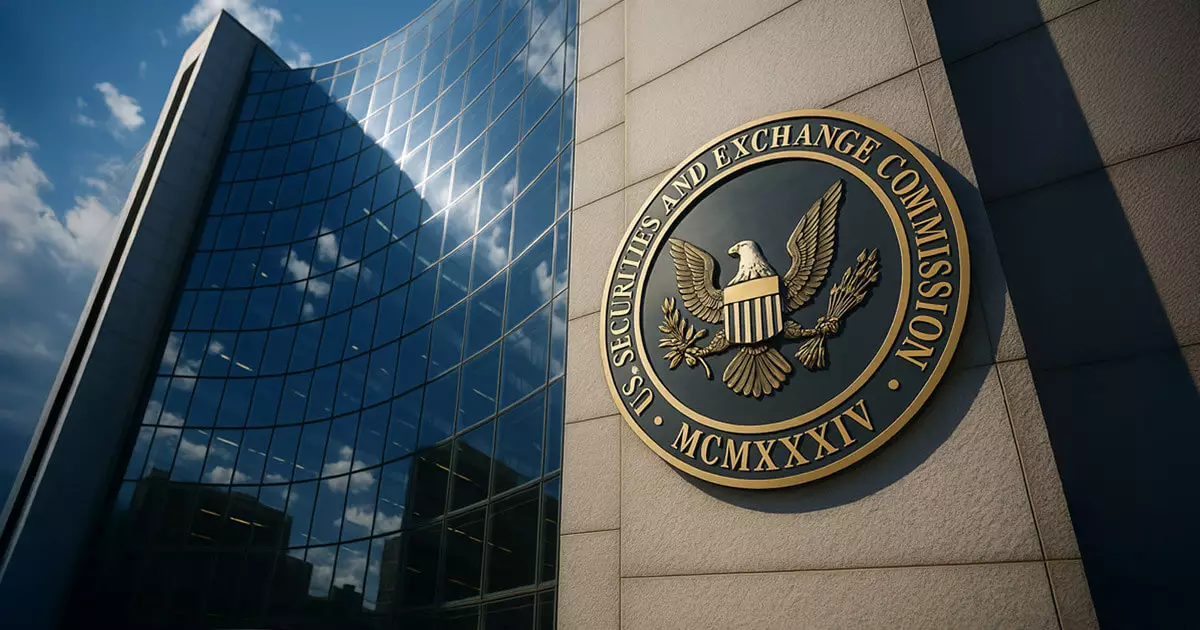The recent advisory from the U.S. Securities and Exchange Commission (SEC) represents a cautious yet profound shift in the financial landscape, potentially ushering in a new era for institutional adoption of digital assets. While the tone remains measured, the implications are vast. In an age where innovation is necessary for competitiveness, the SEC’s incremental approach to regulation is both reassuring for traditional finance and indicative of a burgeoning willingness to engage with disruptive technologies. This guidance arrives as pivotal entities in the cryptocurrency space, such as Chainlink, collaborate with regulatory bodies, illustrating a willingness to bridge the gap between innovation and established financial practices.
Incremental Progress and Its Implications
SEC Commissioner Hester Peirce aptly characterized the agency’s latest guidance as “incremental, not comprehensive,” a recognition that while progress is being made, it often feels painstakingly slow. Financial institutions have long expressed a desire for clarity; this guidance finally provides a semblance of that clarity. The SEC’s delineation of how securities laws apply to broker-dealers dealing in non-security cryptocurrencies marks an important step. Yet, it is vital to remember that merely crafting rules around these assets does not equate to a broad acceptance of digital currencies within traditional financial frameworks. It’s a form of permission, but not necessarily an embrace.
This permissive stance, however, comes with caveats. Broker-dealers, it seems, may rejoice in the newfound clarity concerning Bitcoin and Ethereum but must also navigate the labyrinth of customer protection regulations. The SEC has made it clear that digital assets not deemed securities do not qualify for protections under the Securities Investor Protection Act (SIPA), creating a precarious risk for investors. This dichotomy serves as a chilling reminder that progress in one area does not eliminate the overarching challenges of regulatory compliance and investor safety.
The Role of Chainlink and Collaborative Innovation
What truly stands out from this SEC guidance is the pivotal role played by Chainlink in its development. The recent evolution of the regulatory landscape reflects Chainlink’s unique positioning at the crossroads of traditional finance and blockchain technology. The company’s engagements with the SEC reflect an almost symbiotic relationship where innovation informs regulation and vice versa. The agency’s reference to “unified golden records” and “smart-contract-driven compliance checks” indicates a willingness to adapt to new technological paradigms.
Chainlink’s work in demonstrating the use of smart contracts for compliance in public blockchain settings highlights a blossoming recognition of the utility in this technology. With its proprietary framework, Chainlink may well serve as the connective tissue that binds traditional financial institutions to the rapidly evolving blockchain ecosystem. This collaboration not only enhances the legitimacy of blockchain technology but also aligns directly with the agency’s goals of maintaining rigorous standards amid rapid innovation.
The Cost Considerations of Compliance
Another critical aspect of the SEC’s guidance lies in its implications for cost efficiency within the $132 trillion global fund-administration market. As institutions begin to adopt SEC-approved on-chain processes, we should expect to see significant reductions in operational costs. The SEC’s embrace of distributed ledger technology (DLT) marks an opportunity for institutions to rethink conventional methods of recordkeeping and compliance. However, the extent to which this will translate into tangible financial shifts remains to be seen.
While regulatory compliance can often be a burden, the SEC’s virtualization of certain processes could potentially lead to cost efficiencies that outweigh initial investments in technology. These developments suggest a tantalizing future where compliance and recordkeeping become less cumbersome and more integrated within existing financial frameworks. But given the current environment of economic uncertainty, such proactive technological investments require an examination of risk versus reward.
The Future of Institutional Cryptocurrency Engagement
The SEC’s fresh guidance, while initially appearing reserved, contains the promise of transformative change. For institutions to fully embrace the digital asset landscape, they must engage in the kind of risk assessment and proactive policy navigation that the SEC’s latest insights encourage. The relationship between regulatory frameworks and financial innovation is more dynamic than ever. If financial institutions can adapt to and leverage this narrative, the groundwork may be laid for a robust future where digital assets flourish alongside traditional securities, striking a delicate, necessary balance.
In a society that thrives on progress, these new guidelines from the SEC show that while the path may be winding and cautious, it is leading us toward a landscape of increasing acceptance and diversification in the realm of finance.


















